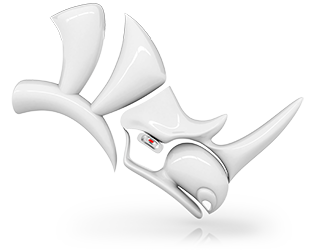Revolve
| Icon | Description | Toolbars | Menu |
|---|---|---|---|
| The Revolve command creates a surface by revolving a profile curve that defines the surface shape around an axis. |
|
Surface > Revolve |
| History | Crease Splitting |
|---|---|
Steps
- Select curves.
- Pick the start and end of the revolve axis. The start and end of the revolve axis can be attached to existing objects using object snaps when History is recorded.
- Specify option
Command-line options
DeleteInput
Yes: Deletes the original geometry.
No: Retains the original geometry.
Deformable
Yes: The surface is rebuilt on the ‘around’ direction to a degree-3 non-rational surface. Specify how many points in that direction. Deformable revolves can be deformed smoothly with point editing.
No: The resulting revolved surface is an exact revolve: a rational surface with fully-multiple knots at the quadrants. This kind of surface is not easy to deform smoothly by point editing.
PointCount
Specifies the number of control points in the result.
FullCircle
Revolves the input curve 360 degrees as a shortcut for specifying 360 degrees as the revolve angle.
AskForStartAngle
Yes: Allows setting the angle (a number of degrees away from the current input curve location) the revolve will start.
No: Starts the revolve from 0 (the input curve location).
SplitAtTangents
Yes: Allows setting the angle (a number of degrees away from the current input curve location) the revolve will start.
No: Starts the revolve from 0 (the input curve location).

Original polycurve (left), SplitAtTangents=No (center), SplitAtTangents=Yes (right).
SubCrv
Type subcrv to select part of a curve as input.
See also
- Create Surfaces

